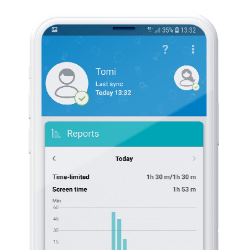How are my kids interacting with social media daily?
Trends are great until we fall for them.
By Malcolm Tuck, Managing Director, ESET UK
When cyber threat detections have risen by a fifth, we all must consider the information we share online and ascertain just what is “too much information” (TMI). Just like adults, children are increasingly at risk of having their online identity stolen and misused. Because of this, they must understand what they should and shouldn’t share online.
It is very tempting for children to share information about themselves online, whether it’s what they are wearing, what they are getting up to with their mates, or what they are listening to. Often posts are accompanied by pictures, selfies and tags. Others may share information about them too by posting a photo of them on social media or tagging them in a post.
Children must be alert to the dangers of TMI– oversharing information online can put a child at risk – making them vulnerable to wily hackers, who can use content to steal their identity or guess passwords. Remind your children that there is no such thing as a delete button. Once information is online, it can exist forever. I have seen first-hand the impact oversharing can have on internet users of all ages. While we try our best to stop people from falling victim to these crimes, it is helpful to highlight the consequences of oversharing online.
Information makes the internet go round. Companies are constantly collecting information about us all, most of the time without us even realising it. Whilst this can be useful when they use the information for their purposes (such as Netflix recommending exciting new shows or Amazon recommending associated products), this information can also be used for nefarious intent if it falls into the wrong hands.
Don’t be fooled into thinking that information that doesn’t identify your child (e.g., IP address, gender or time spent online) is acceptable. When such information is combined, it can create a precise picture of who they are, where they live and what they are doing. They can merge this with readily available data – such as which school a child attends – to identify the precise child. At ESET, we know just how cunning cybercriminals can be, which is why we are here to help keep your data safe.
From smartphones to smartwatches, all the devices used by your child will include essential information about them, from their name and location to their conversations. Don’t leave a weak link – make sure you protect them all. A couple of years ago, a smartwatch manufacturer exposed the data of more than five thousand children by not paying enough attention to its servers’ security. Using the leaked data, the child’s daily habits, from their routes to school to their most visited GPS locations, could be infiltrated. Worryingly, this is far from being an isolated case.
The phrase TMI is becoming increasingly prevalent in the online world, and educating your children on these three tips to keep them safer online is vital. Combining caution, vigilance, and protection is a solid foundation for your kids on the internet. It teaches children the dangers of sharing information online and encourages them to never tick privacy policy boxes without reading the terms and conditions, download files carelessly, or take a one-password-fits-all approach to security. Head to the advice hub on Internet Matters to learn more about what you can do to control your child’s data online.
To help your kids learn more about online safety, visit Digital Matters - a free online educational platform created in collaboration with Internet Matters.


With ESET Parental Control for Android
TRY FREE FOR 30 DAYSTrends are great until we fall for them.
In our present digital age, where social media platforms are a hub for connection, it's crucial to understand the implications of oversharing, particularly for our kids.
By sharing more we can prevent oversharing